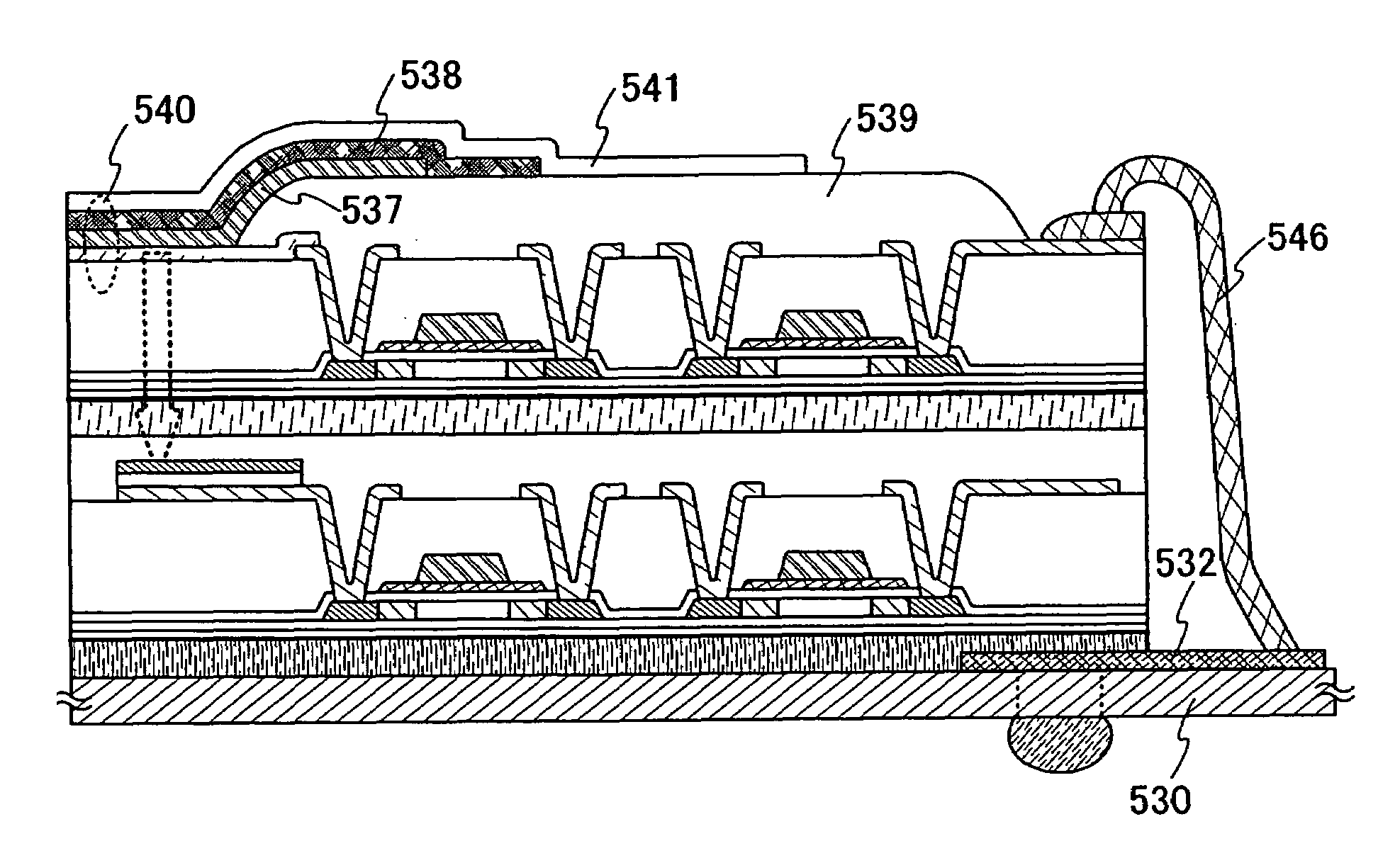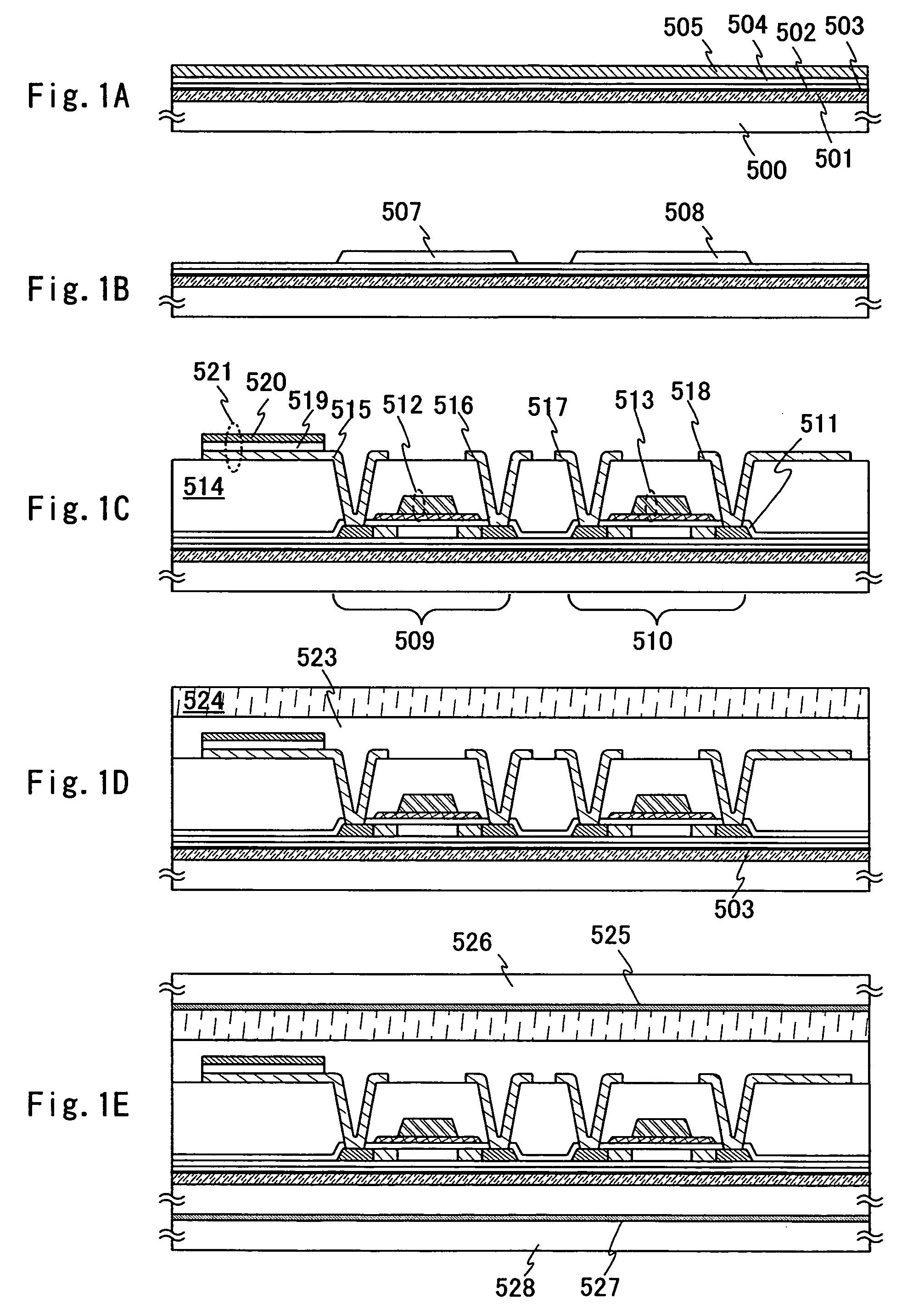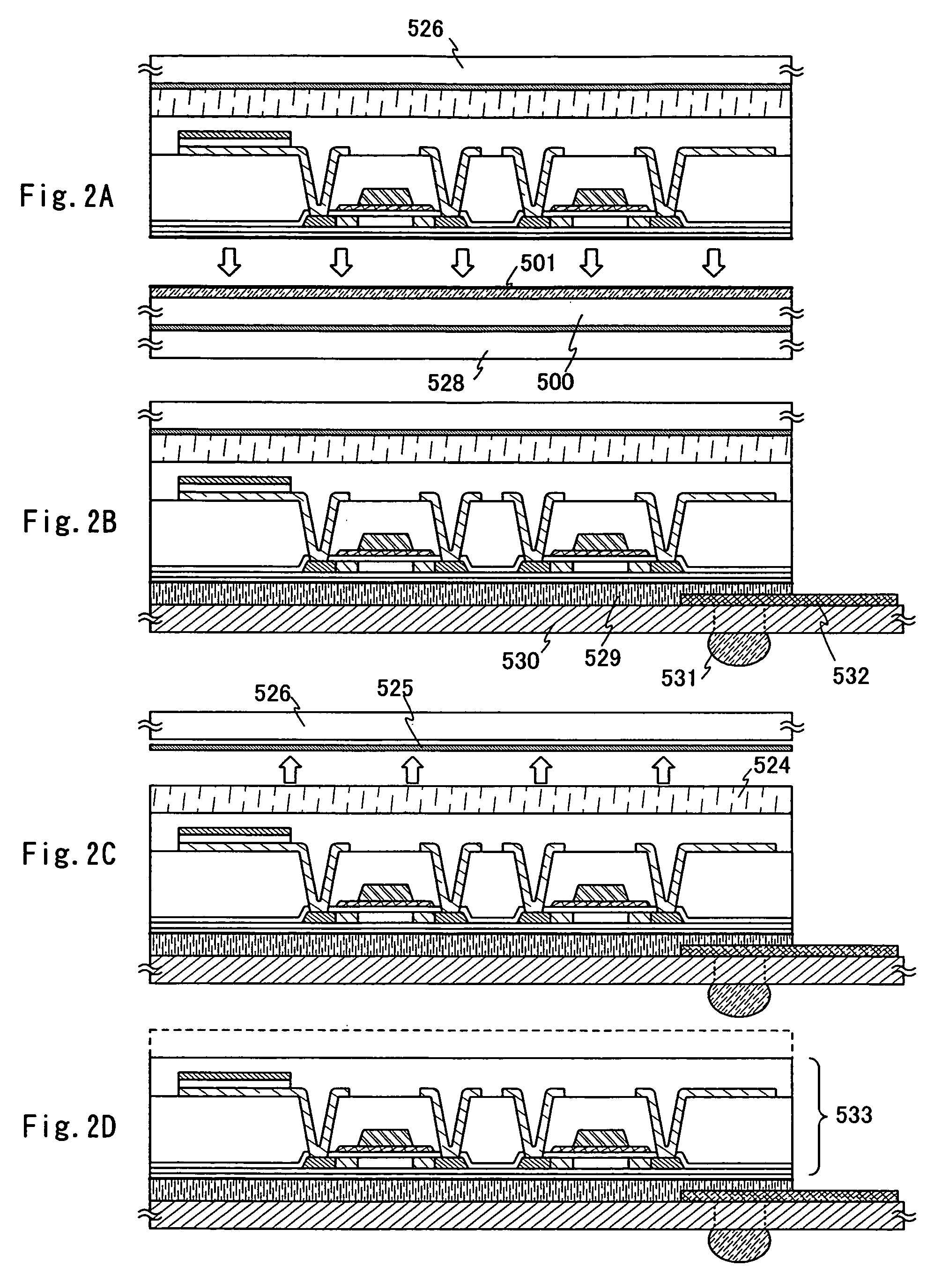Semiconductor device comprising a light emitting element and a light receiving element
a semiconductor and light-emitting element technology, applied in the direction of solid-state devices, transistors, radio-controlled devices, etc., can solve the problems of low operating rate, high integration of lsi, and restricted performance of information processing of integrated circuits, so as to prevent the lengthening of wirings, the effect of low operating ra
- Summary
- Abstract
- Description
- Claims
- Application Information
AI Technical Summary
Benefits of technology
Problems solved by technology
Method used
Image
Examples
embodiment 1
[0138]In this embodiment, explanation is made on an example of forming a microprocessor by the use of a CPU (Central Processing Unit) formed of a plurality of thin film chips.
[0139]A TFT formed on a glass substrate operates at a lower rate as compared with a single crystalline transistor. Therefore, in the case of forming a CPU on a glass substrate, when the process contents become complex, it is difficult for a single CPU to carry out the processing at an adequate rate. To solve such problem, a series of processing steps of the CPU are divided into several steps in accordance with each purpose, and a CPU formed of one thin film chip is assigned to each processing step. Then, by interconnecting each thin film chip to each other by optical interconnect, a series of processing steps can be performed as is the case of using a single CPU. Each CPU formed of a thin film chip has only to perform the assigned processing step, thus, the operating rate is enhanced as compared with in perform...
embodiment 2
[0149]The thin film integrated circuit according to the invention can be applied to various types of memories. By stacking memories, the capacitance of the memories can be enlarged while reducing the packaging area. In addition, by transmitting and receiving data between each thin film chip by means of optical transmission, the number of pins used for packaging can be reduced even in stacking the memories.
[0150]As a memory to be stacked, a RAM (volatile memory) as typified by an SRAM (Static Random Access Memory), a DRAM (Dynamic Random Access Memory) or the like, and a ROM (non-volatile memory) typified by a mask ROM, an EPROM (Erasable Programmable Read Only Memory), an EEPROM (Electrically Erasable Programmable ROM), a flash memory, a ferroelectric memory or the like can be utilized. Also, these memories may be combined to be stacked.
[0151]When stacking memories, a R / W (Read / Write) circuit for selecting reading or writing, a pre-charge circuit, a control circuit (refresh circuit)...
embodiment 3
[0162]In this embodiment, a configuration of a one-chip microcomputer formed of a plurality of thin film chips will be described.
[0163]FIG. 10 shows a block diagram of a microprocessor according to the invention. The microprocessor of the invention is formed of two layers of thin film chips. A thin film chip 630 on the first layer includes an SIO (Serial Input / Output) 631, an MMU (Memory Management Unit) 632, a counter 633, a DAC (Digital to Analog Converter) 634, a bus controller (bus interface) 635, an optical transmitting portion 636, and an input / output port 637. A thin film chip 640 on the second layer includes a CPU 641, a RAM 642, a ROM 643, and an optical transmitting portion 644.
[0164]The optical transmitting portions 636 and 644 each include a light emitting element and a light receiving element, and in the optical transmitting portions 636 and 644, various kinds of signals and power supply voltages are transmitted and received by optical transmission.
[0165]As described in...
PUM
 Login to View More
Login to View More Abstract
Description
Claims
Application Information
 Login to View More
Login to View More - R&D
- Intellectual Property
- Life Sciences
- Materials
- Tech Scout
- Unparalleled Data Quality
- Higher Quality Content
- 60% Fewer Hallucinations
Browse by: Latest US Patents, China's latest patents, Technical Efficacy Thesaurus, Application Domain, Technology Topic, Popular Technical Reports.
© 2025 PatSnap. All rights reserved.Legal|Privacy policy|Modern Slavery Act Transparency Statement|Sitemap|About US| Contact US: help@patsnap.com



